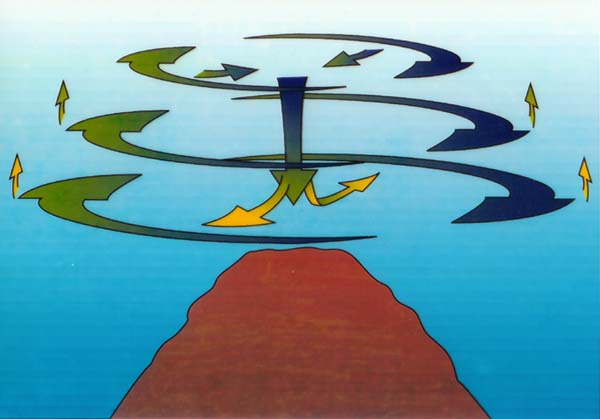This diagram (not to scale) shows the type of circulation around a seamount summit that might tend to retain larvae. The circular flows run clockwise, decreasing in strength with height off the bottom. There is a strong lateral flow outward near the seamount summit, with weaker inward flows higher up. Vertical currents are strongly downward near the center and weaker and upward near the periphery. Larvae caught in this flow pattern might easily complete their development near the seamount summit.
This diagram is from Mullineaux, L.S. and S.W. Mills 1997 "A test of the larval retention hypothesis in seamount-generated flows," Deep-Sea Research 44: 745-770, a study on currents and larval settlement at Fieberling Guyot, a Pacific seamount.


